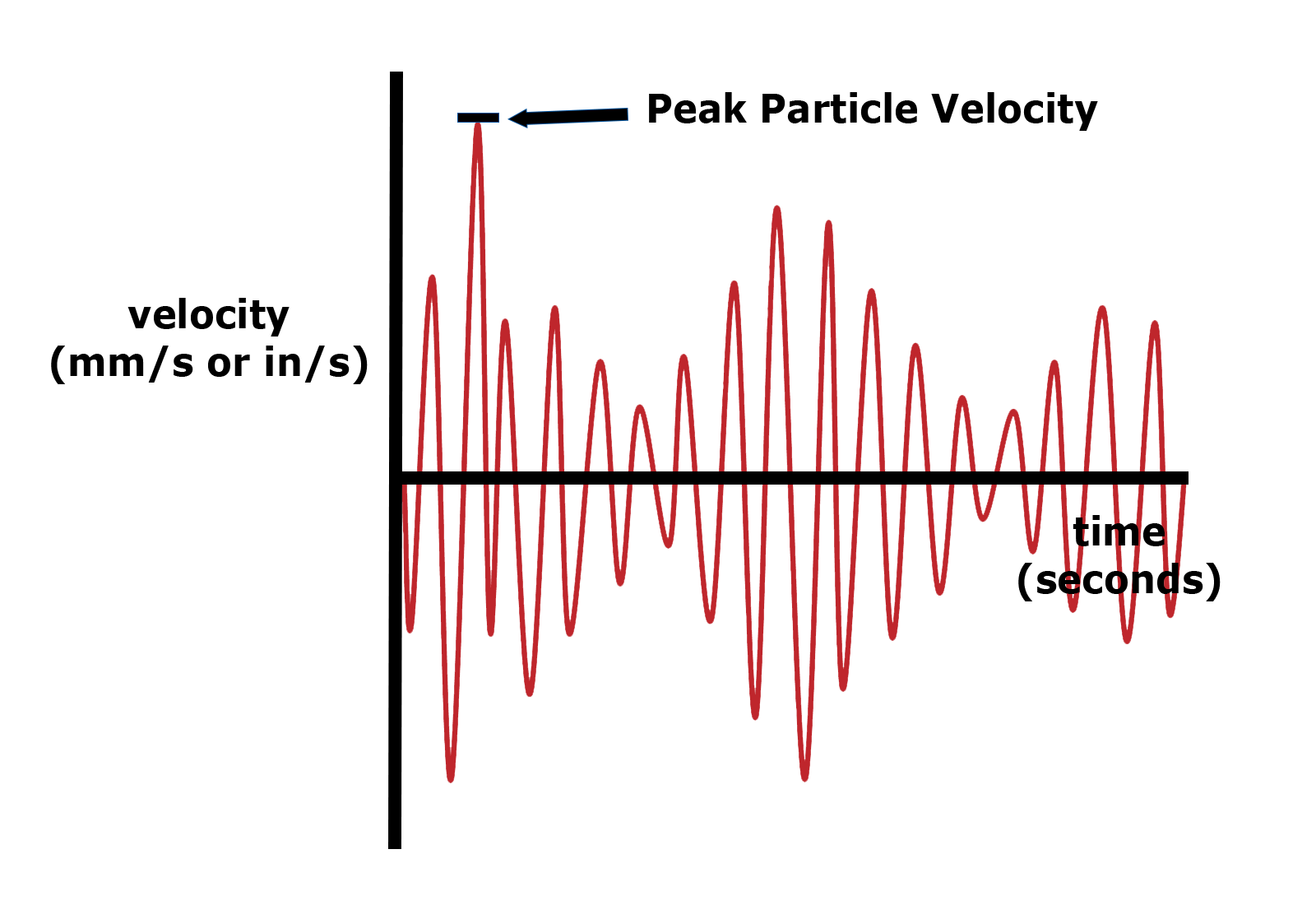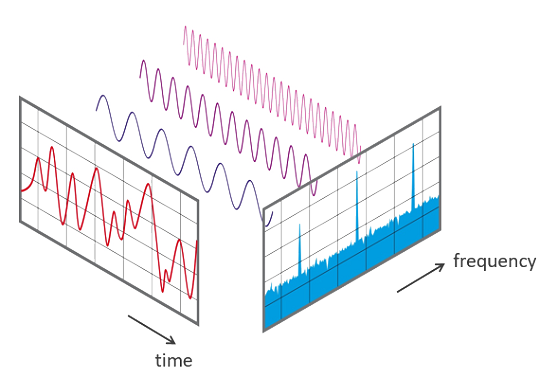During vibration, particles within the structure oscillate. For each axis, the speed (velocity) at which the particles oscillate is calculated from the distance moved (displacement) over time.
Particle Velocity (v), measured in mm/s or in/s, is defined as
v = Δd / Δt
Δd → the particle displacement in millimeters or inches
Δt → the time in seconds
PPV (Peak Particle Velocity)
The PPV is the most basic value used in vibration measurements. It indicates the greatest particle velocity over a period of time per axis.
PPV is defined as the maximum absolute value of the unweighted signal

PCPV (Peak Component Particle Velocity)
|
The PCPV is the maximum of the three PPVs in each axis direction.
PCPV = max(PPVx, PPVy, PPVz)
|
PVS (Peak Vector Sum)
|
The PVS is the resulting velocity calculated by simultaneously considering the PPVs in all of the x, y, and z directions.
PVS = √((PPVx)2 + (PPVy)2 + (PPVz)2)
In words this is mathematically described as the square root of the sum of squares of the PPV components.
|
DF (Dominant Frequencies)
|
A vibration signal can be broken down into individual frequency components (using Zero Crossing* or Fast Fourier Transform methods). From this, the Dominant Frequencies (DF) can provide worthwhile information, such as a change in the natural (resonant) frequencies. These frequencies are proportional to a structure's stiffness. A change, for example in a steel structure, can indicate serious corrosion. The monitoring of steel bridges should therefore alert on any shifts in the frequency’s values.

View of a signal in the time and frequency domain
* Zero Crossing (ZC) is the simplest method of frequency estimation. It works on the principle that, since an oscillation crosses the x-axis twice during each cycle, we can simply count the number of crossings and divide it by two and again divide it by the observation window size, giving us the Dominant Frequency. This method works better when we have a few complete cycles. The longer the length of the observation window, the greater is the accuracy.
|
What is a Vibration Monitor?